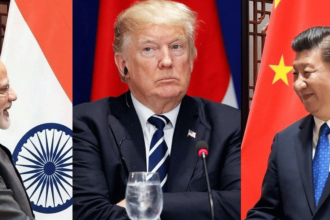
New Delhi: The US apple industry is making a strong push to regain its lost market share in India after years of trade disputes. But is this an attempt to fairly compete, or is the US trying to flood the Indian market with cheap apples, pushing local farmers out of business?
The problem started in 2018 when the US government imposed tariffs (extra taxes) on steel and aluminum imports from India. In response, India placed high tariffs on several US products, including apples. This made American apples more expensive, causing their sales in India to drop by 79%.
Before the tariffs, India was the second-largest buyer of US apples. But with import duties reaching 70%, American apples became too costly, and Indian traders turned to apples from other countries like Iran, Turkey and Chile.
Surge in US apple imports
In September 2023, India removed the retaliatory tariffs on US apples, making them more affordable again. Since then, imports of American apples have increased 40 times in just three months. This sudden surge has concerns among Indian apple growers, particularly in Himachal Pradesh and Jammu and Kashmir, who fear that cheaper US apples could flood the market and hurt their business.
The US Apple Association (USApple) and its president, Jim Bair, are urging US government to remove steel and aluminum tariffs on India. Their argument is that once the US does this, India will also permanently remove any remaining tariffs on apples, allowing American farmers to sell more apples in India.
Bair claimed that American apple growers were “innocent bystanders” in the trade dispute between the two governments and should not suffer because of unrelated tariff wars. He insists that U.S. farmers just want a fair chance to compete in the Indian market.
Is US trying to dominate Indian apple market?
Some Indian apple traders and farmers worry that this is an attempt to dump (sell at very low prices) US apples in India, which could undercut local growers. Since American farmers have advanced technology and large-scale production, they can sometimes sell apples at lower prices than Indian farmers. If too many US apples enter the market, local apple prices could crash, leading to big losses for Indian farmers.
On the other hand, Indian consumers and traders see a benefit. More US apples mean greater variety and possibly lower prices for consumers.




